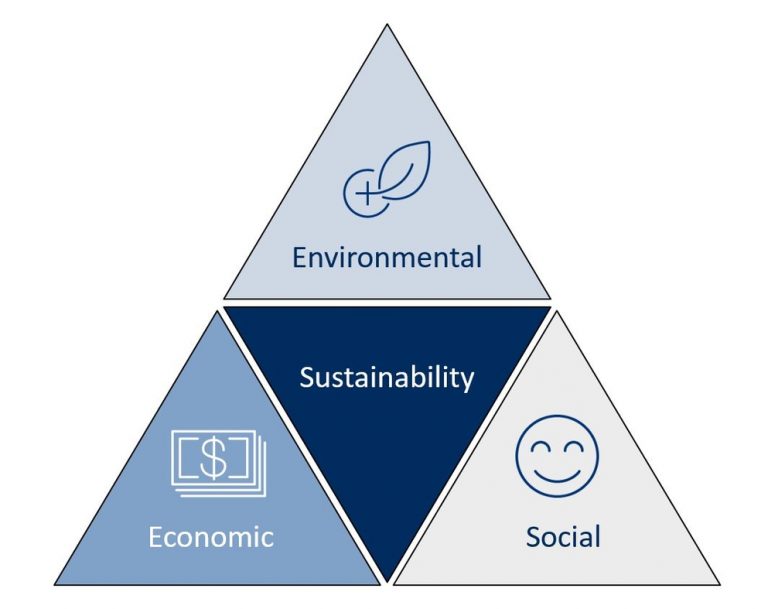
Sustainability through energy harvesting technology
Sustainability has become increasingly important over the past few decades. People are making conscious efforts to live more sustainably by recycling, reducing plastic use, opting for bikes and public transportation over cars, and supporting local products.
Companies are also embracing sustainability, recognizing the need to incorporate eco-friendly practices into their daily operations—not just internally, but also to satisfy the growing demands of environmentally conscious customers and partners. Among the technologies driving this shift, energy harvesting stands out as a powerful tool for promoting sustainability, particularly within smart building systems.
The three pillars of the sustainability triangle
The concept of the sustainability triangle, which includes economic, ecological, and social pillars, offers a comprehensive framework for balancing development and environmental stewardship. By aligning technology with these principles, energy harvesting emerges as a key player in achieving sustainability goals.

The aim is to find an equivalent balance between the three sides. If you adapt this to technology, the concept of energy harvesting ticks all the boxes.
Self-powered radio sensors and switches utilize energy harvesting to draw power from their environment, harnessing movement, light, and temperature variations. This eliminates the need for batteries or wiring, making these devices ideal for classic building automation and smart building applications within the Internet of Things (IoT). For instance, energy harvesting sensors can monitor room usage, optimize parking management, track equipment utilization, and even streamline restroom cleaning based on real-time demand.
Why energy harvesting-based sensors are the perfect fit
Energy harvesting sensors create a balanced sustainability triangle by offering economic, ecological, and social benefits. Economically, they are cost-effective from the outset, reducing expenses related to installation and ongoing maintenance. Their wireless nature allows for flexible placement and easy adaptation to changing requirements, without the need for battery replacements or complex wiring.
Ecologically, the vast number of sensors required for IoT and smart home applications highlights the importance of “no batteries, no cables” solutions. This approach significantly reduces the environmental impact associated with traditional sensor technologies.
Socially, energy harvesting sensors enhance the quality of life and work in smart buildings. They contribute to reducing carbon dioxide emissions through improved energy efficiency, such as optimizing heating and ventilation systems, which is crucial in the fight against climate change.
The future of sustainable smart buildings
Energy harvesting technology is essential in shaping sustainable smart buildings. By minimizing environmental impact and maximizing efficiency, it ensures that we not only meet today’s needs but also pave the way for a greener future.
